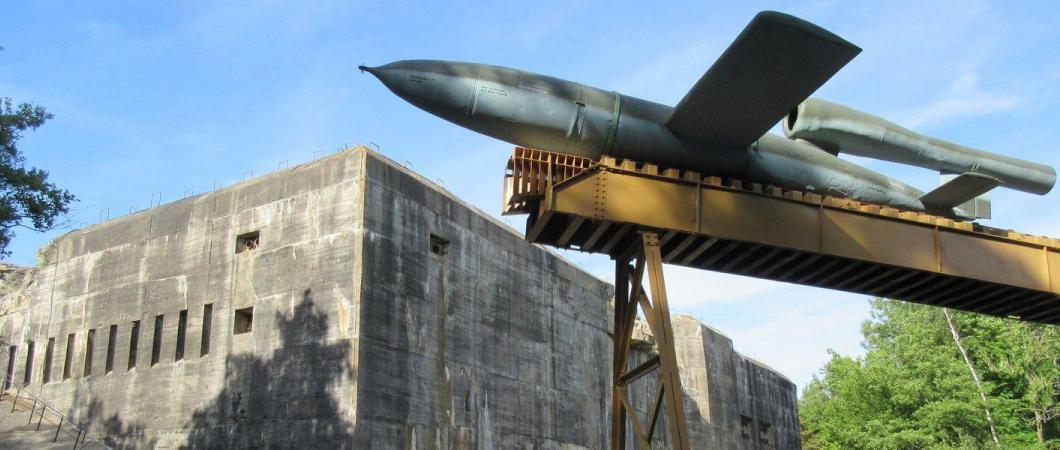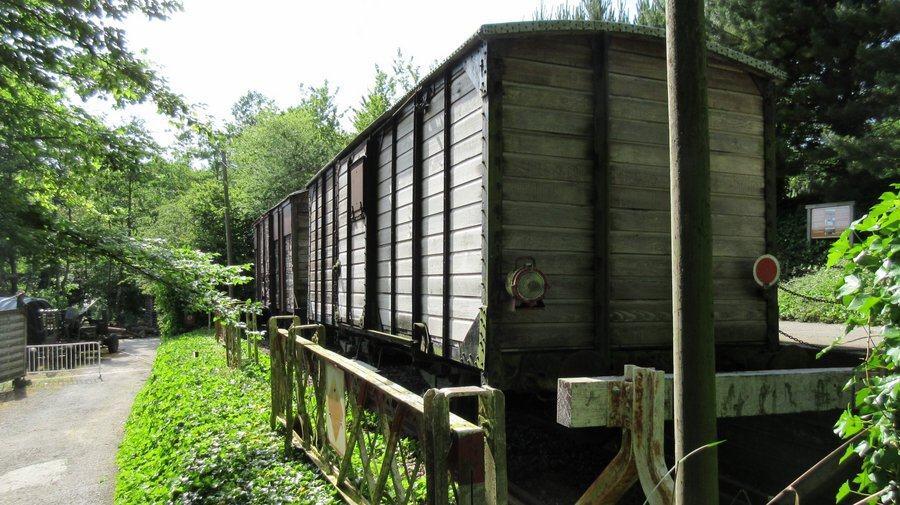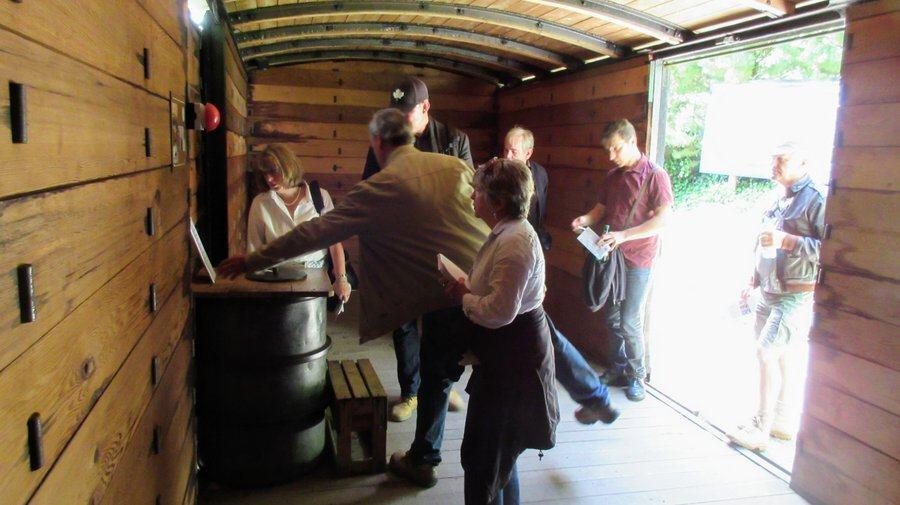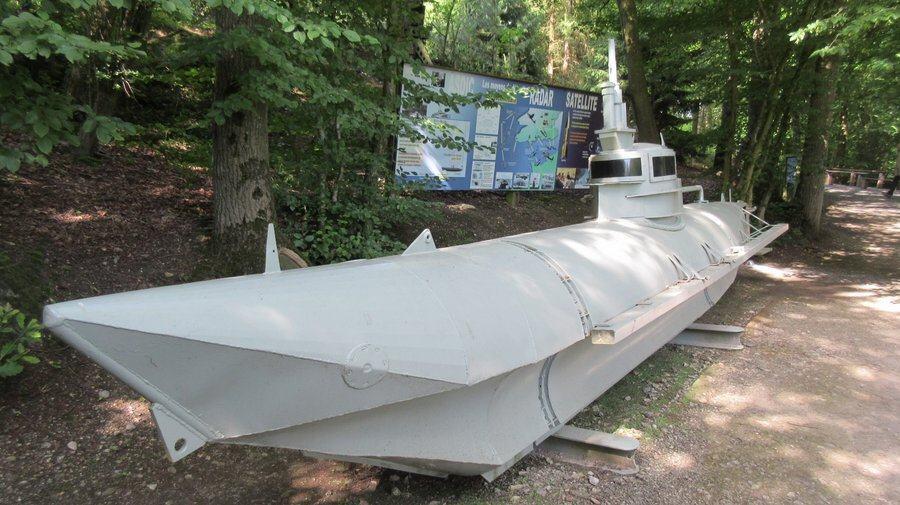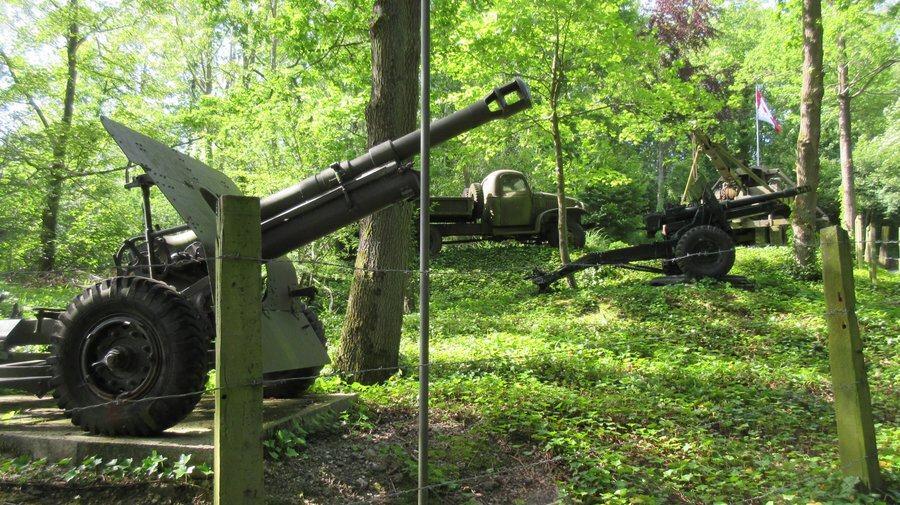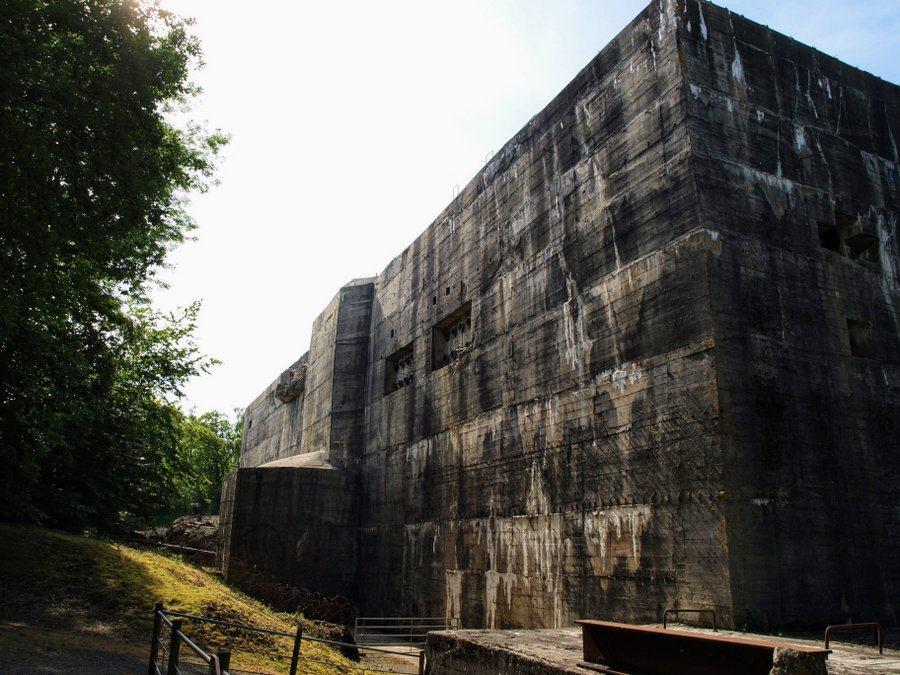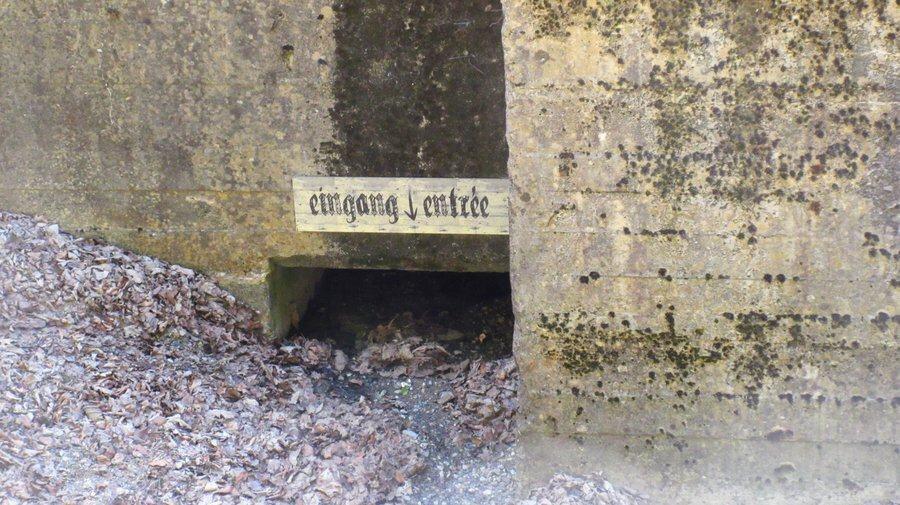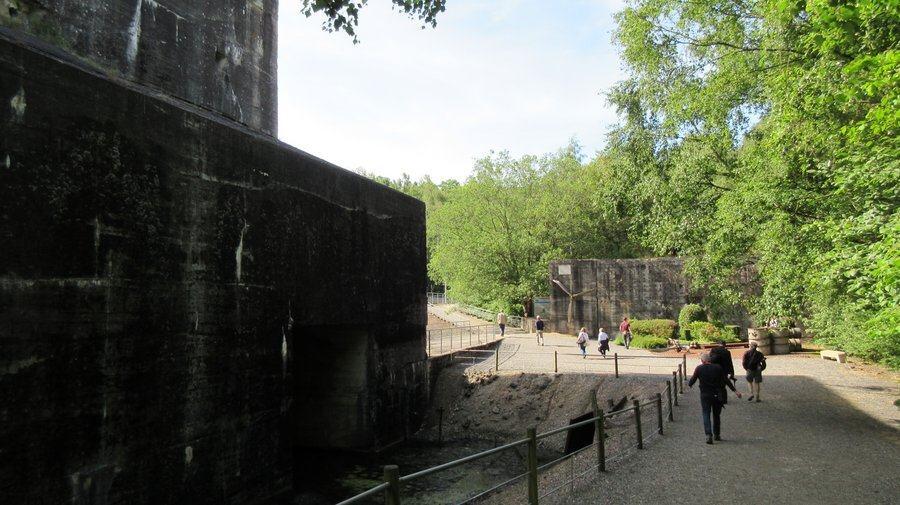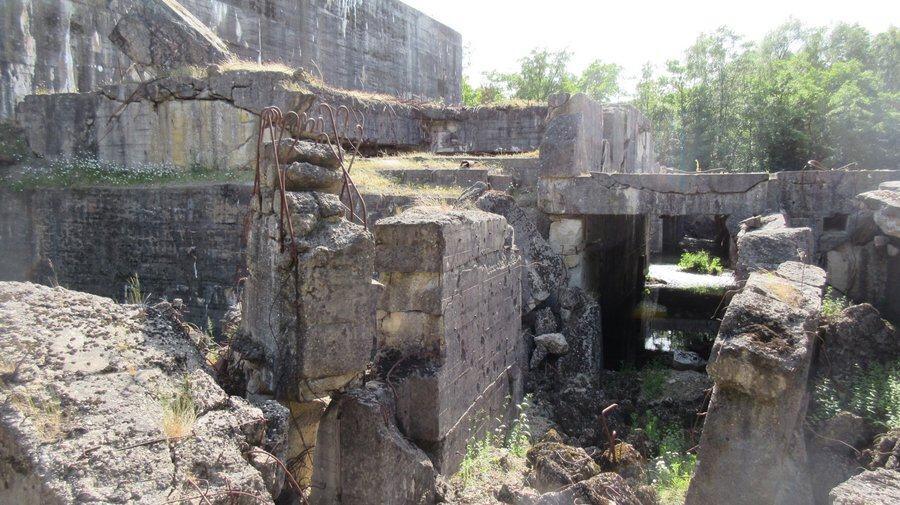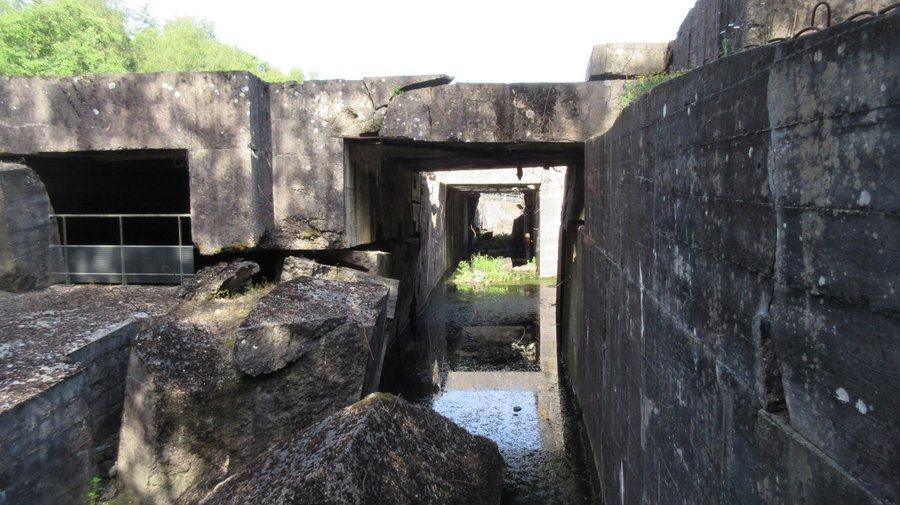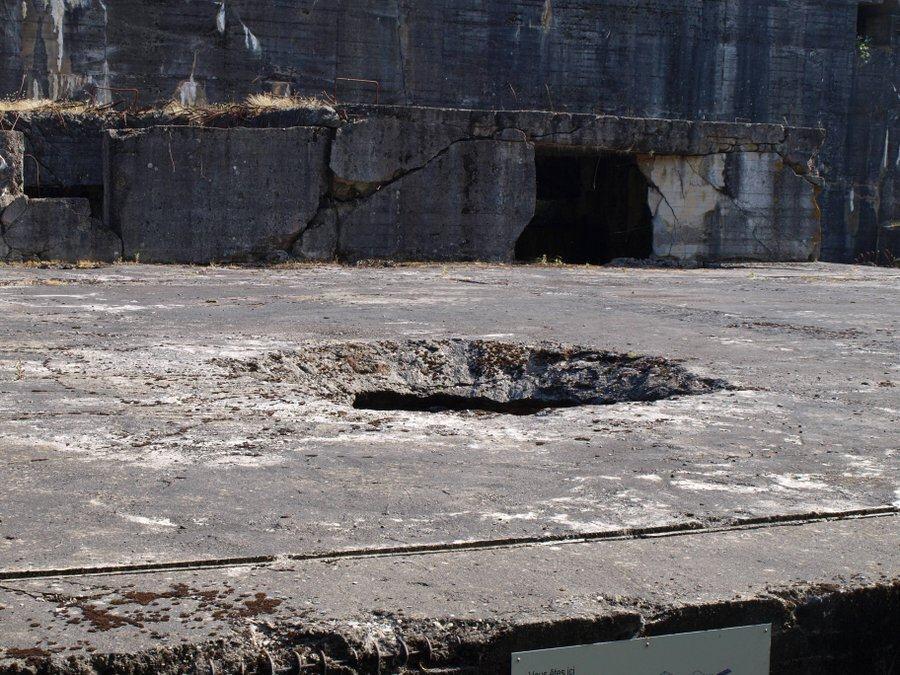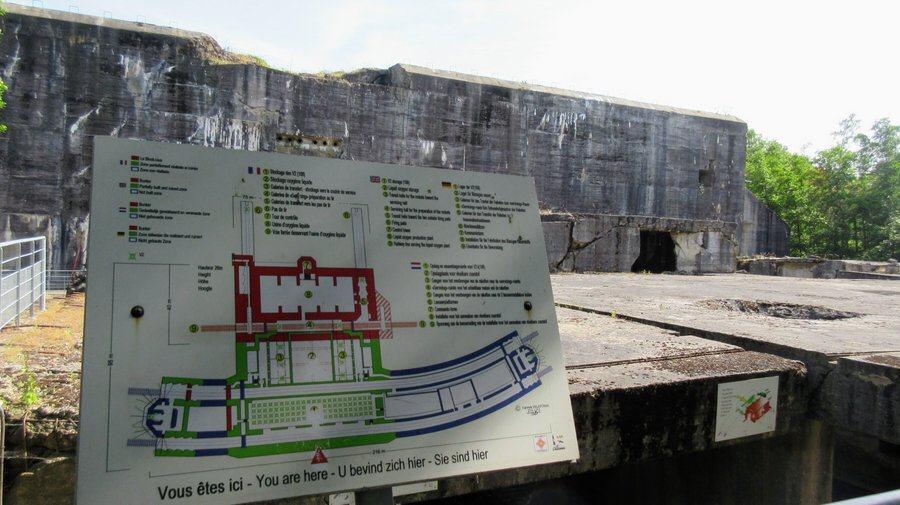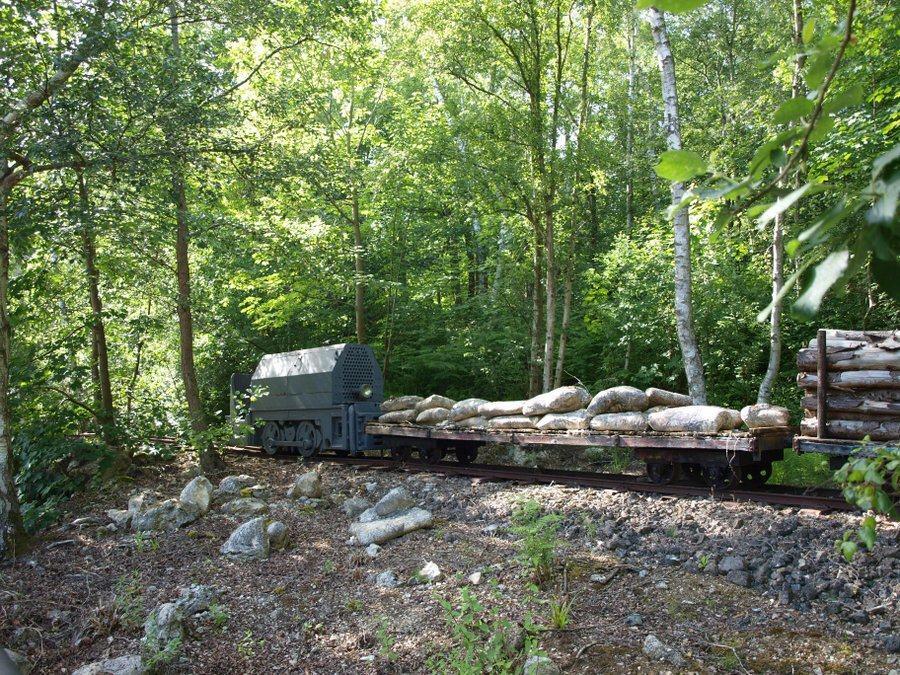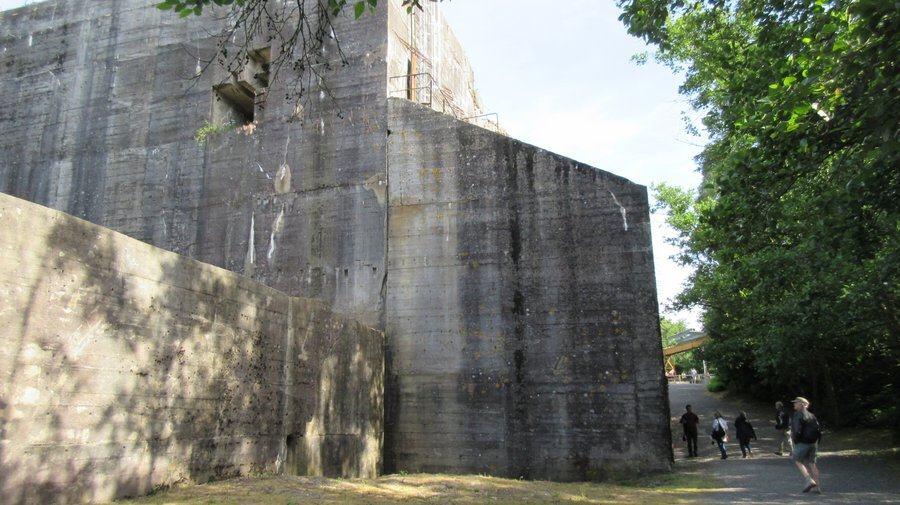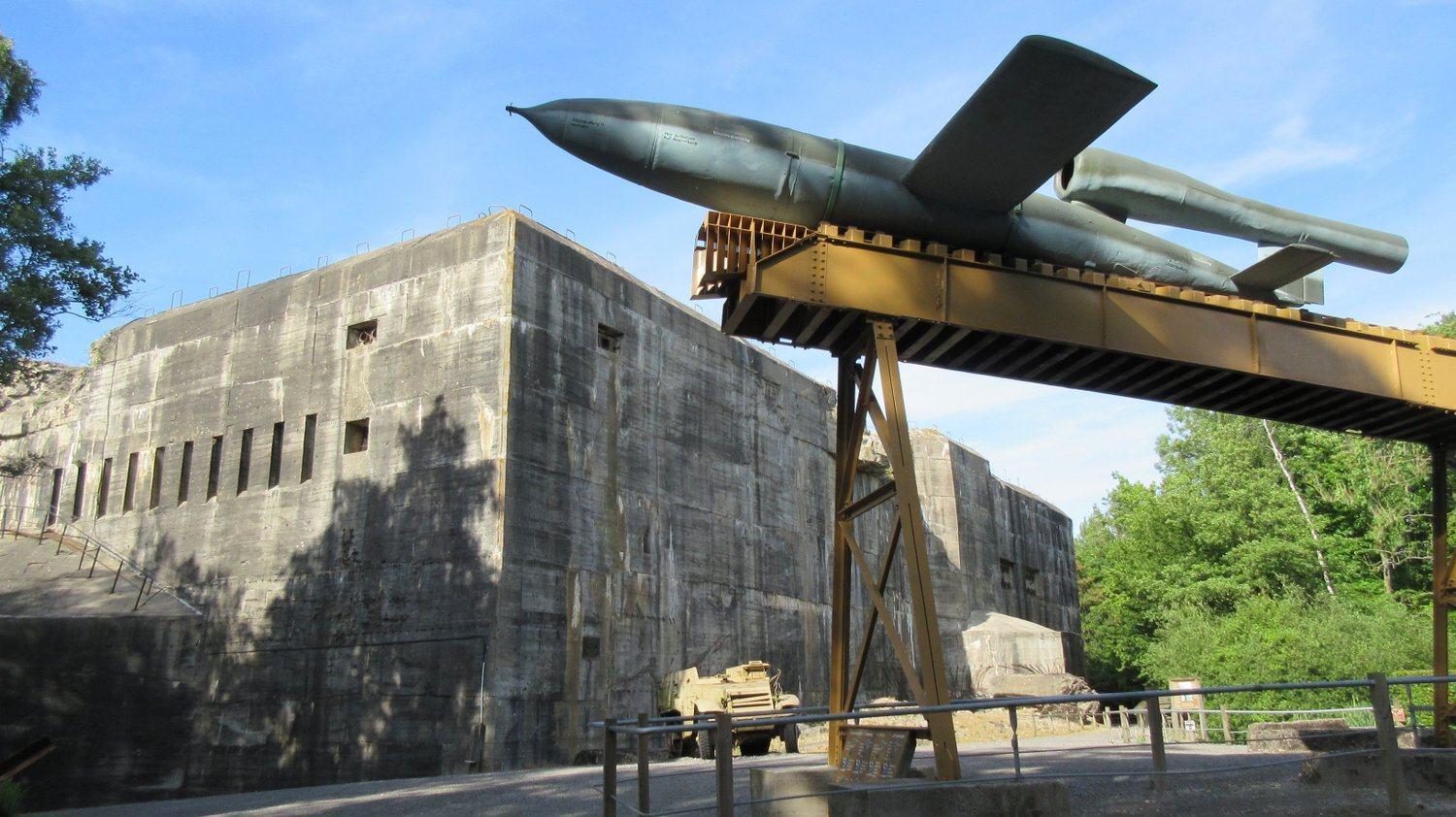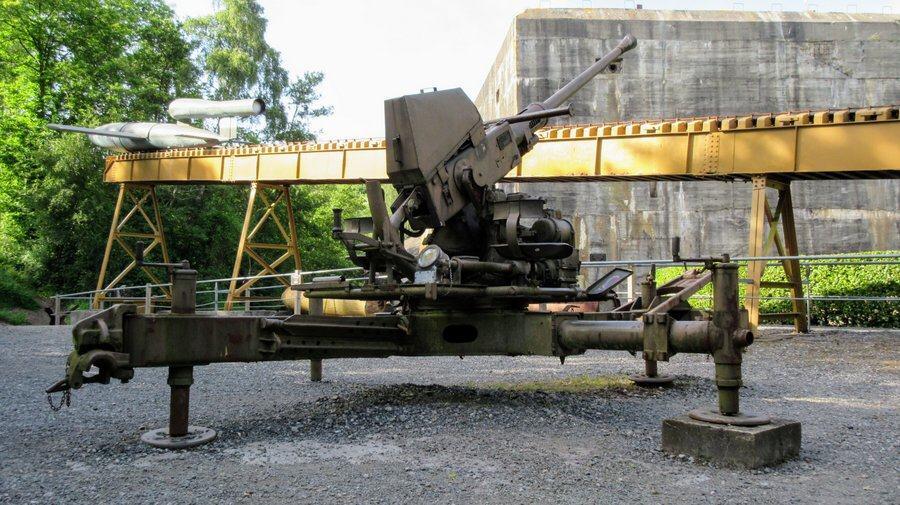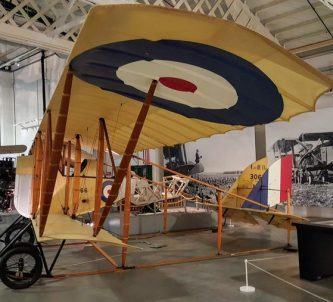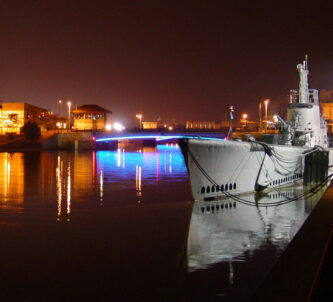The Blockhaus at Eperlecques is a huge concrete bunker built by the Germans in WW2 as part of its ‘Vengeance’ weapons programme (V1 flying bomb, V2 rocket, and V3 supergun). Now it is a privately owned museum, and a protected building of national historic significance.
On 22nd December 1942 Hitler issued orders via Albert Speer (Minister of Armaments) for Gen. Walter Dornberger who ran the V programme, to build a bunker in northern France to house a combined liquid oxygen (LOX) factory and assembly & launch facility for V2 rockets. Work starts in March 1943 with 3,000+ slave labourers working around the clock to finish the construction by October.
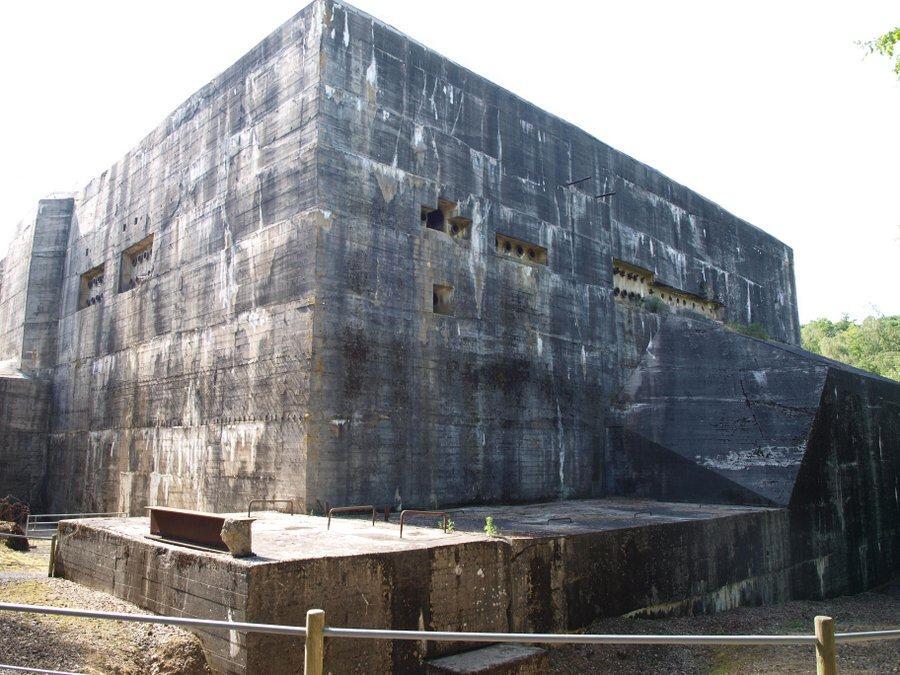
Allied aerial reconnaissance spots it in May 1943 and is not convinced that it is the innocent power plant (“Kraftwerk”) that locals have assumed. They link it to other V-weapons sites like la Coupole 9 miles away, and make it a priority target for aerial attack. At 6.46pm on the evening of Friday 27th Aug 1943, it was attacked by 72 x B17 bombers escorted by 48 fighters. Forty minutes later 36 x B-17s with 96 x fighters (P47 Thunderbolts and Spitfires) appeared overhead. Four minutes later a fresh wave of 36 B-17s and 72 fighters attacked, and finally nine minutes after that (7.39pm) another wave of 41 x bombers and 59 fighters attacked.
In total that evening 2,745 aircrew in 729 aircraft attacked, dropping 366 x 1-ton bombs or larger, destroying the northern half of the structure, where the fortified railway station and storage bays are located. Allied losses were 5 x Spitfires and 4 x B-17s.
The effect was devastating and work on the site didn’t start again till November 1943, when the Germans decided the southern half of the bunker could still be used to produce LOX. The bunker remained on the Allies hit list throughout the winter and work was disrupted to such an extent that in June 1944 the Germans gave up. A few days later the Allies dropped a Tallboy bomb which smashed through the “impervious” 5-metre thick roof, and the site was all but abandoned. It was captured by Canadian forces on 4th September 1944.
Visiting the Blockhaus

Visitors are led uphill through the woods and around the site in groups¹, stopping in key locations to listen to an audio description from loudspeakers of what they are looking at. The tour starts at a pair of railway wagons which would have been used to take prisoners from the area to the concentration camps and bring slave labour into work sites such as this. When the docent closes and locks the door, you get a sense of what the unfortunate passengers would have experienced.
The path through the woods is littered with World War II materials and equipment such as canons, vehicles and bombs that the owners have collected. One thing I was really not expecting to bump into on the path was a German Biber (“Beaver”) midget submarine! There aren’t many about but I’ve seen one at the Imperial War Museum Duxford (and there’s another at the RN Submarine Museum in Gosport).
The woodland floor is very rough and you quickly realise that’s because it is pitted with huge bomb craters from the many raids on the site.
Finally the path emerges at the southeast corner of the bunker which is startlingly enormous and you can see why it is such an important war relic. It’s hard to grasp that the blockhaus is only a third of the size it was originally planned to be and much of the base is covered, so you are looking at only the top 75ft of a 109 ft high building.
The tour takes visitors anti-clockwise from the SE corner around to the north side where the railway lines came into the fortified station and storage depot that was so badly damaged in the raid of Aug 43. The damage is extraordinary. Much of the roof and the structures underneath were torn up. On the uphill slope behind the path along the north side of the bunker, there’s the remains of the narrow gauge railway track that was used to supply the workers with cement and lumber.
On the west face there’s an entrance into the gloomy interior of the LOX factory, guarded by an extraordinary 2 metre thick blast door wide and tall enough for a railway carriage and weighing 216 tons. It still slides open easily. Inside there are some wall displays covering some of the history of the site but it’s a little too gloomy to read them easily. In the full height section of the bunker there is a full size illustration of a V2 rocket that demonstrates how these enormous ballistic missiles were handled.
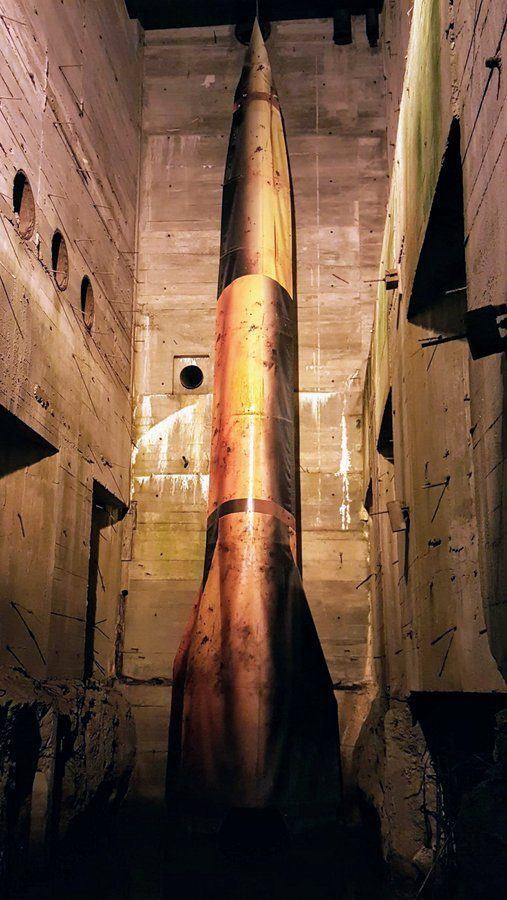
Back outside at the SW corner there’s a mobile V1 launch ramp with a replica V1 flying bomb on it, that had been set up in the neighbouring commune of Watten. There were many similar V1 launch ramps in the region. From here the path takes the tour back down the hill to the exit. The whole tour takes around 90 mins.
It’s a little hard to understand the planned role for this multi-purpose facility, and the sequence in which it was both developed and degraded. You start out looking at a massive block of concrete with few clearly discernible features, but once you begin to understand that it was still being built when the north side underground station and LOX storage areas were destroyed, and that the southern half with its supposedly impenetrable roof was built up after that attack to concentrate on LOX production, it begins to make sense.
¹ You can walk around the site yourself, but you are encouraged to join guided groups.
Declaration: I was visiting the area on a press trip hosted by Pas-de-Calais Tourism so my entrance was free.
Factbox
Website:
Le Blockhaus
They also have a 360° virtual tour of the outside of the bunker.
Getting there:
Le Blockhaus de Eperlecques
Rue des Sarts
62910 Eperlecques
France.
Le Blockhaus is nearer Watten than Eperlecques. It’s an hour by car from Calais, and an hour & 15 mins from Lille.
See my guide to staying in the St Omer area.
Entry Price:
| Individuals | |
| Adult | €10,00 |
| Child (8-14) | €6,50 |
| Student (upon student card presentation) | €7,50 |
| Family : 2 adults + 2 to 5 children (8-14) | €30,00 |
| Groups (per person) | |
| Group of adults from 15 to 30 persons | €8,50 |
| Group of adults above 30 persons (free for 1 person in charge and driver) | €7,50 |
| School group (free for 1 person in charge every 12 children) | €5,00 |
| One guided tour for less than 15 pupils | €10,00 |
Opening Hours:
The Blockhaus is closed during the winter months (November, December, January and February).
During the rest of the year it is open every day (inc Sundays and public holidays), except Tuesday mornings.
| March (last entrance 3.30 pm) | 2.15pm to 5pm |
| April, May, June, September, (last entrance 4.30 pm) | 10am to 6pm |
| July, August, (last entrance 5.30 pm) | 10am to 7pm |
| October (last entrance 3.30 pm) | 10am to 5pm |

